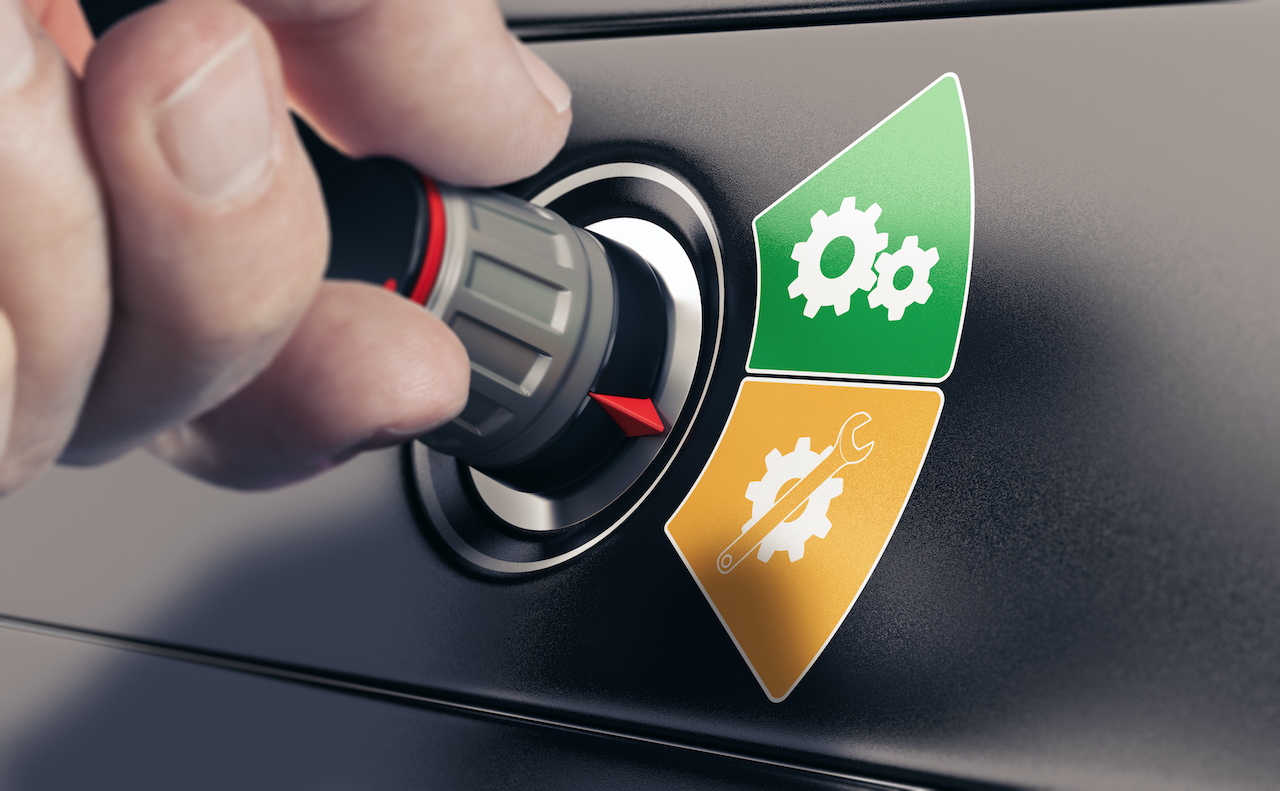Whether you run a large corporation or a fresh startup, maintenance is an aspect you can’t ignore if you want to sustain your enterprise. Alongside marketing and R&D, maintenance makes up a large share (15%-40%) of your budget, even going so far as to bankrupt you if you’re not serious about it.
Preventive maintenance makes your life somewhat easier. It’s often the focus for most managers. It not only keeps your equipment running but also grants you enough margin to prepare for any malfunctions. Throughout this piece, you’ll learn the basics of preventive maintenance, the appropriate method to perform it, and how a computerised maintenance management system (CMMS) can benefit your business.

What Is Preventive Maintenance?
Preventive maintenance consists of early interventions to prevent breakdowns and decrease the probability of an asset failing. That is, it is planned maintenance performed even when a piece of equipment maintains its operational capacity. In addition to regular inspections, it also involves reporting the condition of all systems regularly. That creates an updated checklist for the entire system that’s more convenient for long-term repairs.
Unlike reactive maintenance, which only occurs during breakdowns or near the machinery’s lifespan, preventive maintenance is a continuous process. It involves investing in permanent staff and creating a strict action plan that leaves little room for error. That’s why it’s an essential part of Industry 4.0.
Types of Preventive Maintenance
Preventive maintenance can be divided into various types, each suiting an enterprise’s specific field and scale. The differentiation can be based on frequency or data. The application of a hybrid system is usually the best approach, such as time-based prescriptive maintenance or usage-based predictive maintenance. The details are as follows.
Time-based and Usage-based
Regarding frequency, preventive maintenance can be categorised as either time-based or usage-based. The former involves inspecting and testing the equipment after a fixed period. For example, a milling machine that remains active for 4 hours a day should be inspected every two weeks.
Usage-based preventive maintenance occurs for devices that rarely need repairs. It is suitable for methods that require inspection after a specific milestone, such as a transport company reviewing a vehicle’s condition after 10,000 miles.
Predictive Maintenance and Prescriptive Maintenance
You can go with predictive maintenance if you have a robust data collection system linked to your preventive maintenance software. It includes using the available data to analyse when the failure might occur and establishing a comfortable time frame for necessary upgrades or repairs. It’s more complex for long-term devices, especially for companies that just received significant overhauls.
On the other hand, prescriptive maintenance uses modern computing techniques like artificial intelligence to calculate precise maintenance cycles. That saves your finances from the more standard methods. However, it initially requires more expensive examination methods to facilitate the process.
Importance of Preventive Maintenance
Now that you’re familiar with preventive maintenance, it’s time to consider why it’s crucial for any business. A few notable criteria are mentioned below.

Reducing downtime and increasing effectiveness
Preventive maintenance reduces the period when regular operations remain inactive. That typically occurs when valuable equipment and systems become damaged and need repairs. So, you save yourself from hours of blocked services, that can mean the difference between life and death for cases like hospitals and other medical facilities.
Increase in asset reliability and equipment lifetime
With adequate fixtures done within due time, you can extend the lifespan of most of your assets far beyond the warranty period. Since all the resources are functional within acceptable parameters, the company can direct the load without worrying about overstressing the system.
Increased security
The risk of sabotage is a grim reality faced by any competitive corporation. That can occur as failed machinery and intellectual property theft that concerns accessing sensitive data or classified machine specifications. Preventive maintenance dissolves such concerns, as you can check the logs for the personnel who operate and maintain the equipment. Any unauthorised access can be quickly detected, which is useful for places like hotels as well.
Reduction of costs over reactive maintenance
Reactive maintenance often scales up your budget over time. As more equipment fails, the damage can spread to other parts of the system, prompting more repairs and replacements. That can also decrease the productive duration, which affects your bottom line. Thus, there is no surprise that over 75% of all corporations prefer preventive maintenance.
Greater comfort
A comfortable working or service environment is essential to retain employees and customers. That can only happen when they are comfortable with your infrastructure. Utilising adequate measures with an updated preventive maintenance checklist allows you to do just that.
Automation of Preventive Maintenance Work Orders
With the world adopting more digital methods thanks to IoT, there has been an impact on the maintenance of small, medium, and large-scale companies alike. Those can improve the effectiveness of preventive maintenance measures through proven methodologies.
Scheduling of preventive maintenance tasks
In the case of any maintenance, the schedule makes all the difference. Too soon, you invest time and money in unnecessary tasks that can chip away your company’s profits. Too late, and you might invite harm to anyone present within the facility. Therefore, scheduling repairs and work orders at the proper time keeps things perfectly balanced.
You can automate the process by installing the required software and hardware and letting a computer create the schedule for you. For instance, your maintenance staff gets an alert whenever the temperature sensors on a drilling machine pass a threshold. If you operate a cloud-based internet service provider, you can set warnings when the server space is about to fill up.
Tracking the asset and monitoring of plans in real time
As the need for maintenance takes precedence, every second counts. That is why you need state-of-the-art asset visibility and equipment that relays real-time information to all concerned personnel.
When a work order is initiated, it helps to track its progress, so you know precisely when to resume operations. Otherwise, your facility can face a bottleneck situation that can soon block the rest of the line. It applies to software, too. If you have a virus cleanup on a test server, you’re holding up assignments that require urgent submissions.
Reporting and compliance
Your maintenance team can do their jobs more efficiently if they have the history of all the previous repairs handy. It’s why reliable reporting and compliance statistics are essential to store, especially when you replace or upgrade old equipment. They also provide precise performance statistics to ensure your investments are worth it.
For example, suppose you have a forklift in your warehouse that runs on electricity instead of diesel. In that case, your operations management department can monitor its overall performance by factoring in data from the energy management system. That, combined with the feedback from your staff, lets you determine whether the upgrade was worthwhile.
Short Summary
While developing your business requires plenty of work on streamlining strategies and attracting customers, maintenance is a required field that sustains your profitability in the long run. We hope this guide on preventive maintenance helps you make the appropriate decisions going forward. For the best asset management and CMMS software solutions, connect with the specialists at Qbasis today.



